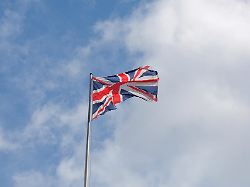Change of power on July 4th?
All data on the election in Great Britain
16.06.2024, 10:43 a.m.
Listen to article
This audio version was artificially generated. More info | Send feedback
Political upheaval is taking place in the British Isles: polls indicate heavy losses for the Conservatives in the upcoming general election. Has Prime Minister Rishi Sunak miscalculated? Data and infographics at a glance.
Parliament in London has been dissolved, and the election campaign in the United Kingdom is already in full swing: on July 4, the approximately 46.6 million registered voters in England, Scotland, Wales and Northern Ireland are called upon to redefine the balance of power in the British House of Commons.
The trigger for the early elections was a sensational decision by the incumbent Prime Minister Rishi Sunak: The conservative Tory leader attempted a kind of liberation move after his party’s local election debacle in early May. In the polls, however, the opposition Labour Party is still well ahead of the governing Tories.
Labour leader and opposition leader Keir Starmer spoke of an “opportunity for change for the better”. After 14 years, it was time for a change. “Stop the chaos,” he called on the British, “start a new chapter and begin rebuilding.” Prime Minister Sunak, on the other hand, campaigned for votes with far-reaching tax cuts, among other things. At the same time, he presented himself as a guarantor of security and economic strength.
“Now is the moment for Britain,” he said in a speech in the pouring rain outside his Downing Street office at the end of May, “to choose its future and decide whether we want to build on the progress we have made or whether we risk going back to square one with no plan and no certainty.”
For Sunak, 44, the July election is his first real test at national level after he was appointed party leader by the Tories in October 2022. “I am the one who is ready to take bold action,” Sunak said. “I have a clear plan and that is how I will keep you and your family safe.”
It is still unclear whether Sunak’s announcements will be enough to turn things around. “The people of Britain are yearning for change,” said Liberal Democrat (LibDem) leader Ed Davey. “And this election is our chance to finally bring it about.”
Review: Parliamentary elections 2019
The conservative Tories (Con) have been in power in the House of Commons, as the British lower house is officially called, since their defeat under Tony Blair and the election victory of David Cameron in May 2010. In the regularly scheduled general elections in 2010 and 2015, the Tory camp was able to defend its majority – and even in the Brexit chaos following Cameron’s controversial EU referendum and the extraordinary general elections in June 2017 and December 2019, the Conservatives were able to hold on to the helm.
However, British politics did not calm down: Since the 2016 vote on the United Kingdom’s exit from the EU, the British have already experienced five prime ministers from the Conservative camp: Cameron was followed by Theresa May and later Boris Johnson, then Liz Truss for a few weeks, until finally Rishi Sunak took over the government in Downing Street No. 10 in autumn 2022.
In the parliamentary elections On 4 July, all 650 seats in the British House of Commons will be up for grabs for re-election. Elections will be held throughout the United Kingdom, i.e. in England, Scotland, Wales and Northern Ireland. Each constituency has one seat to win. The 650 members of the House of Commons each represent their constituency.
According to parliamentary constituency commission 543 MPs (previously: 533), Scotland will send 57 (instead of 59), Wales will send 32 (previously 40) and Northern Ireland will continue to contribute 18 “Members of Parliament”. The number and shape of the constituencies – the so-called constituencies – are based on population figures.
According to British electoral law, the relative majority decides: voters can only cast one vote each. The winner in the 650 constituencies is the person who receives the most votes locally. The “winner takes it all” rule of the majority voting system favors local candidates and larger parties. The local vote shares of the losing competitors expire.
The members of the British House of Commons are elected for a regular term of five years. Those eligible to vote must register in advance. The deadline for this ends with the upcoming election on 18 June. Britons, Scots, Welsh and Northern Irish are then free to vote at the polling station on election day or in advance by postal vote.
The elections in the United Kingdom are traditionally held on a Thursday. According to the British Electoral Commission, the polling stations open on the morning of July 4 at 7:00 a.m. (local time, 8:00 a.m. CEST) and do not close until late in the evening at 10:00 p.m. (CEST: 11:00 p.m.). The counting of votes begins immediately afterwards.
